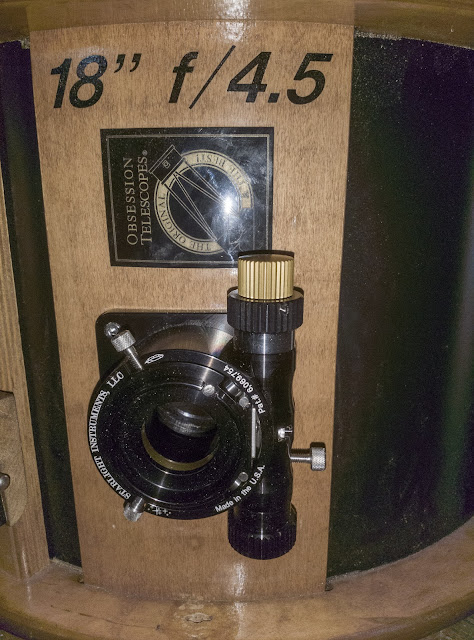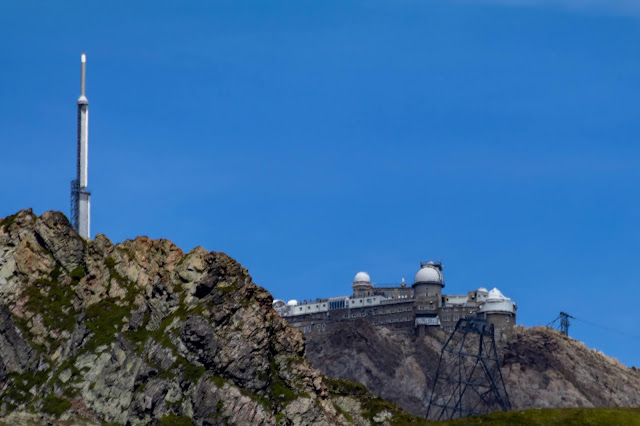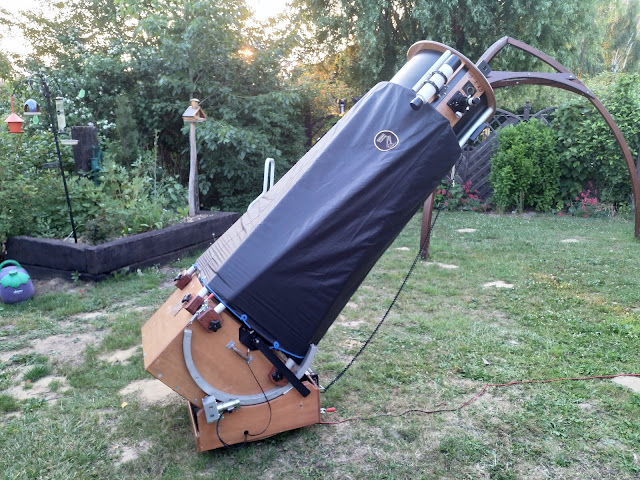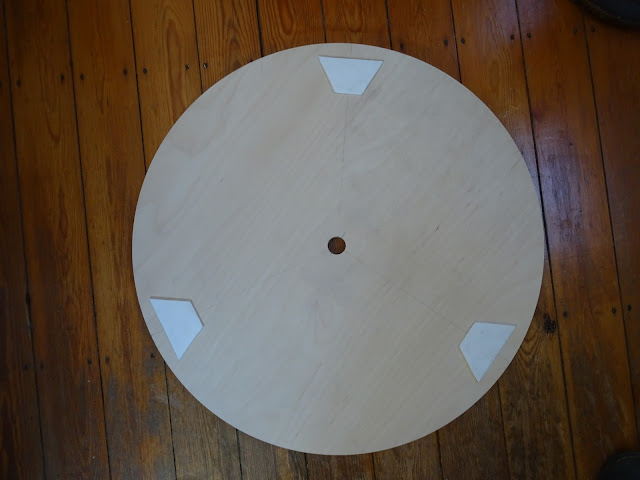Eyepiece case
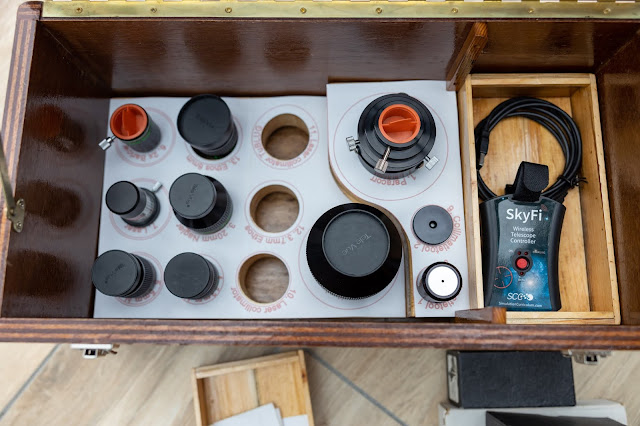
As a Christmas gift, my father-in-law made me this beautiful eyepiece case. The box contains space for all my eyepieces and collimation tools and there is still some spare space for the eyepieces (and the Howie-Glatter laser collimator) I want to buy in the coming year. At the right side of the box, there are 4 boxes that can be stacked, where my other accessories can be stored: SkyFi 3 Argo Navis Sky Quality Meter Handpad for the ServoCAT Red flashlight Power cable for the powered ground board In the top lid, a tablet and a sketchbook can be stored. There is still some place in the box above the eyepieces where the light shroud can be stored. A very nice solution to store my eyepieces! All eyepieces, collimation tools and SkyFi 3 The closed eyepiece case The empty eyepiece case The empty eyepiece case All eyepieces and collimation tools All eyepieces, collimation tools and the Argo Navis All eyepieces, collimation tools, the Sky Quality Meter and the handpad for the ServoCAT All ey







